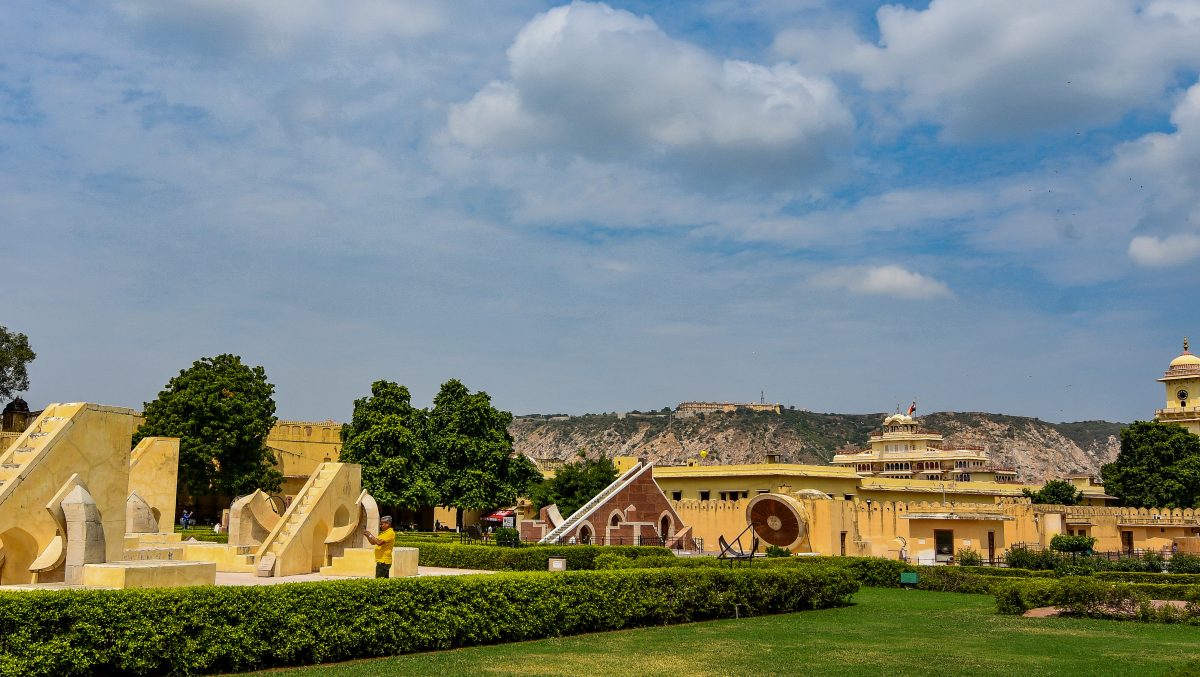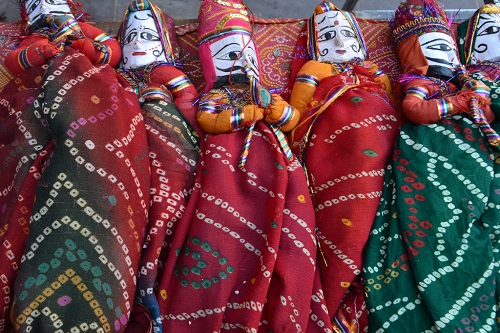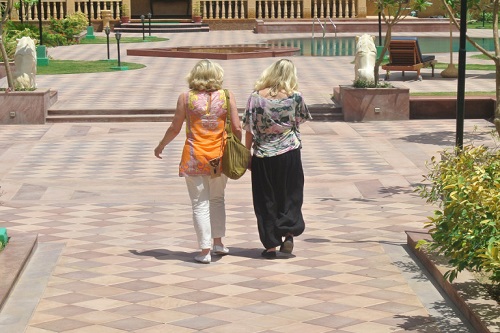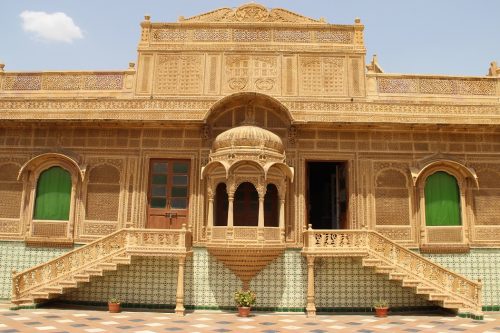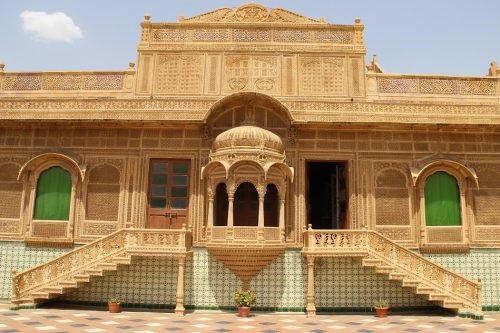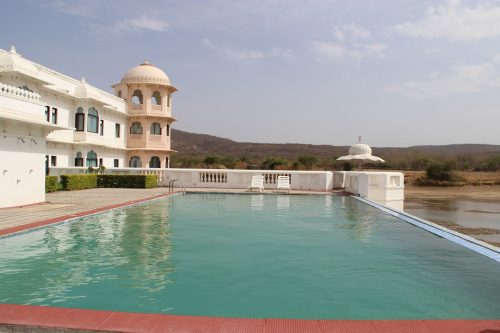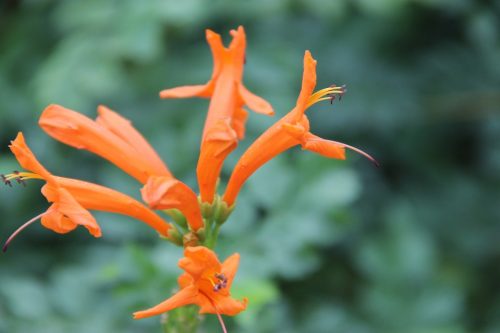Jaipur, the pink city in Rajasthan, has been part of the Golden Triangle frequented by tourists worldwide. Sawai Jai Singh of the Kacchawah dynasty founded the city in 1727 A.D. Its imposing forts, astronomical observatory, royal palaces and vibrant bazaars have attracted Indian and foreign tourists alike. We had visited Jaipur two decades back and were awed by its beauty and opulence. Ever since Jaipur bagged the UNESCO World Heritage Site tag in 2019, we have wanted to reexplore the Pink City with this lens. So, this time around we tried to understand why Jaipur had bagged the UNESCO tag and what all encapsulated it.
Why did Jaipur receive a UNESCO World Heritage Site tag?
As always, I researched about things to do in Jaipur, places to visit, what to eat and where to shop. There is scarce information on what constitutes Jaipur’s status as a UNESCO World Heritage site. I guess that the UNESCO website will surely be my best bet, and I am suitably rewarded with a PDF that has details. It is under three criteria that Jaipur bagged the UNESCO World Heritage Site tag.
- For being an example of town planning and architecture that combines and exchanges various ideas (Hindu, Muslim and Western) from the late medieval periods. Imagine way back in the 18th Century, Jaipur was built as a planned city, combining a Western grid-iron layout with traditional zoning and a desire to rival Mughal cities.
- Jaipur set the trend as an exceptional late medieval trade town in South Asia, inspiring others to follow and establish it as a tradition. While the grid iron pattern in city planning has been used before, applying it on such a massive scale for a planned trade city and its unique urban design makes Jaipur a one-of-a-kind example in the history of urban planning in the Indian subcontinent.
- Jaipur is associated with events or living traditions, with ideas, or with beliefs, with artistic and literary works of outstanding universal significance. The city has maintained its local commercial, artisanal and cooperative traditions to this day. Jaipur, which was historically known for its ‘Chattis Karkhanas’ or 36 industries like lac bangles, miniature paintings, gemstones, etc., continue to be practised even today.
Structures that are part of UNESCO World Heritage Site
The structures that are part of the ensemble are
- Gates and City Walls
- Walled City Bazars
- Chaupars and Chowkris
- Other Historic Structures, including
- Hawa Mahal
- Jantar Mantar
- City Palace Complex
- Sawai Mansingh Town Hall
- Jaleb Chowk
- Rajasthan School of Arts
- Isar Lat
- Temples and Religious Buildings
- Havelis and Houses in Mohallas
- Water Structures
Meeting our guide:
Armed with all this information, we are waiting in our hotel lobby for our guide, from Rajasthan Routes and Trails. He arrives at 10:30 am, and after exchanging pleasantries, I share the details and ask him to help us explore the various monuments and structures as best as we can in a day. He is elated to have clients like us who don’t just enjoy traveling but also want to have a deep dive into learning and exploring with a goal in mind. Our plan is first to explore the observatory, City Palace and Hawa Mahal and then the rest.
Jantar Mantar: We drive to the astronomical observatory Jantar Mantar, which has bagged a UNESCO World Heritage Site tag by itself. After purchasing entry tickets, we enter the premises and see astronomical instruments of various sizes. Built in the 18th Century by Sawai Jai Singh II, the stone observatory is a testament to the advances in astronomy of medieval India. We are awestruck as our guide explains the nuances of each of these instruments.
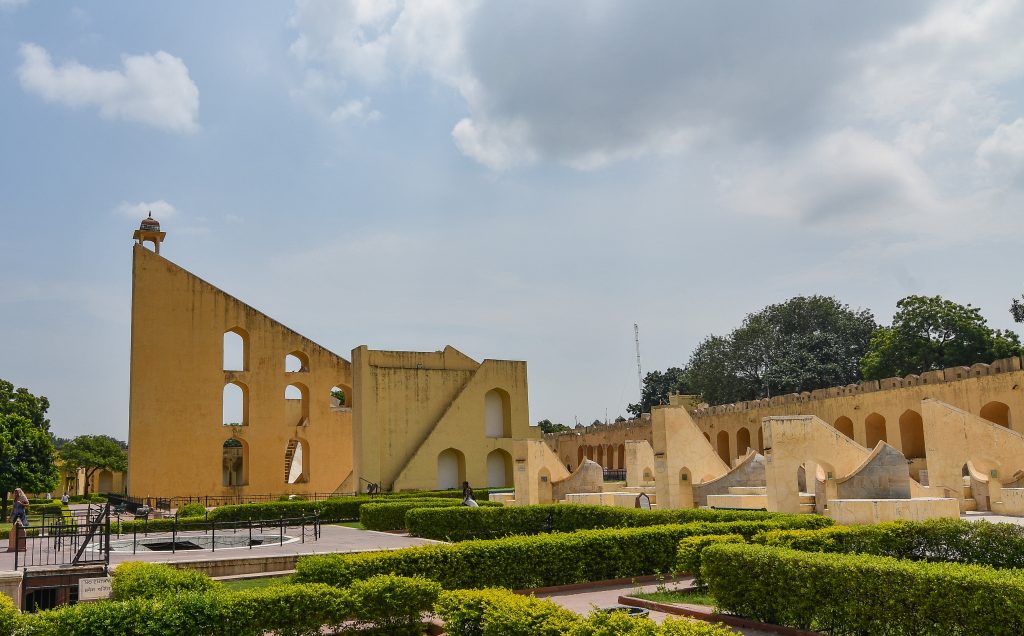
City Palace: Within walking distance of the Jantar Mantar is the City Palace. Sawai Jai Singh II built the palace between 1729 and 1732, with subsequent rulers adding new structures. It has been home to the royal family since the 18th Century, and they continue to reside here even today. It is a fusion of Indian, Rajput and Mughal architectural styles with some European influences. The beauty and opulence of the palace complex are praiseworthy. It is an ensemble of courtyards, gardens and buildings. Parts of the city palace complex are open to the public except the Chandra Mahal, the abode of the royal family. There is a separate article on City Palace, which you can read here.
Hawa Mahal: Our guide takes us next to the iconic Hawa Mahal or Wind Palace. Maharaja Sawai Pratap Singh built the Hawa Mahal in 1799. It is a 5-storey building in the shape of a crown. The 953 small windows or jharokhas have intricate lattices or jhali work. It bears a striking resemblance to the honeycomb of a beehive. There is more to Hawa Mahal than the obligatory selfie with it. There is a separate article on Hawa Mahal, which you can read here.
We have visited the major structures of Jaipur, and now it is time for us to explore the rest of the structures that constitute the UNESCO World Heritage Site. Our guide knows that the structures are numerous, but time is limited. The sweltering heat is also not helping us and tiring us easily. He suggests we hire an electric rickshaw and take a look at the structures spread across the length and breadth of the city. We can stop, alight whenever we want to click pictures and admire the details. This arrangement seems perfect, and we begin exploring the remaining structures. For the sake of ease of reading, we will not put the structures we visited in chronological order but instead focus on various categories.
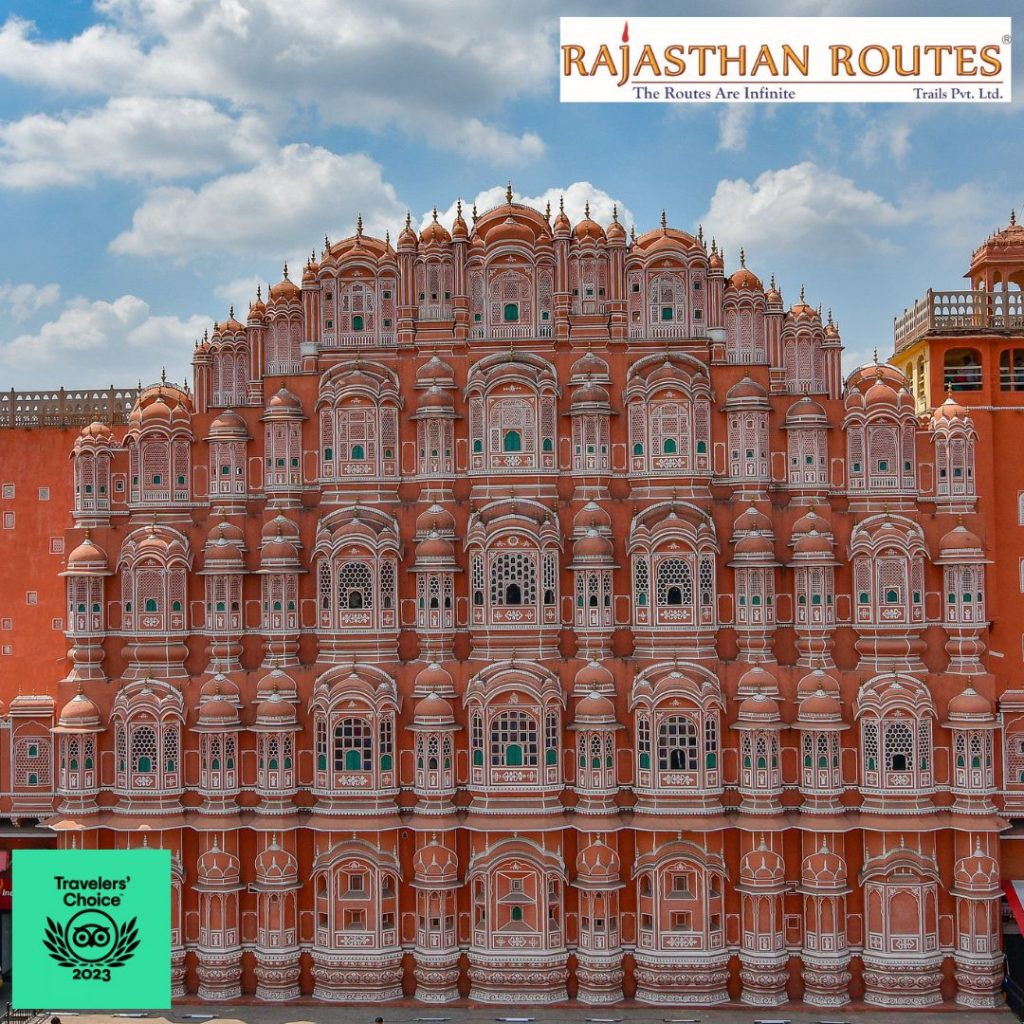
Gates and City Walls:
Jaipur city was planned with a protective wall around it. Ramparts of the wall are still visible in some parts of the city to this day. One could access the city through several gates interspersed in the walls across the city. Originally, there were seven gates or pols, and two were added later. We see the Chandpol Darwaza (Moon Gate), which is in the west of the city, and if you have guessed, the Surajpol Darwaza (Sun Gate) is in the east of the city since the sun rises in the east. The north of the city has the Dhruvpol Darwaza (Pole Star Gate), also called Zorawar Singh Darwaza, which is towards Amer. The city has four southern gates, namely Ajmeri Darwaza (Gate towards Ajmer city), Sanganeri Darwaza (Gate towards Sanganer town) or Shiv Pol (Auspicious Pol), Ganga Pol and Naya Pol (New Gate). We can see the Albert Hall Museum through the Naya Pol.
The city has other smaller gates, like Tripolia Gate (exclusively used by the royal family), Naqarwalla Gate, etc. Our guide explains that in the bygone era, these gates were shut at dusk and would be opened only at dawn. The city walls and gates ensured the city’s inhabitants were safe from enemy attacks.
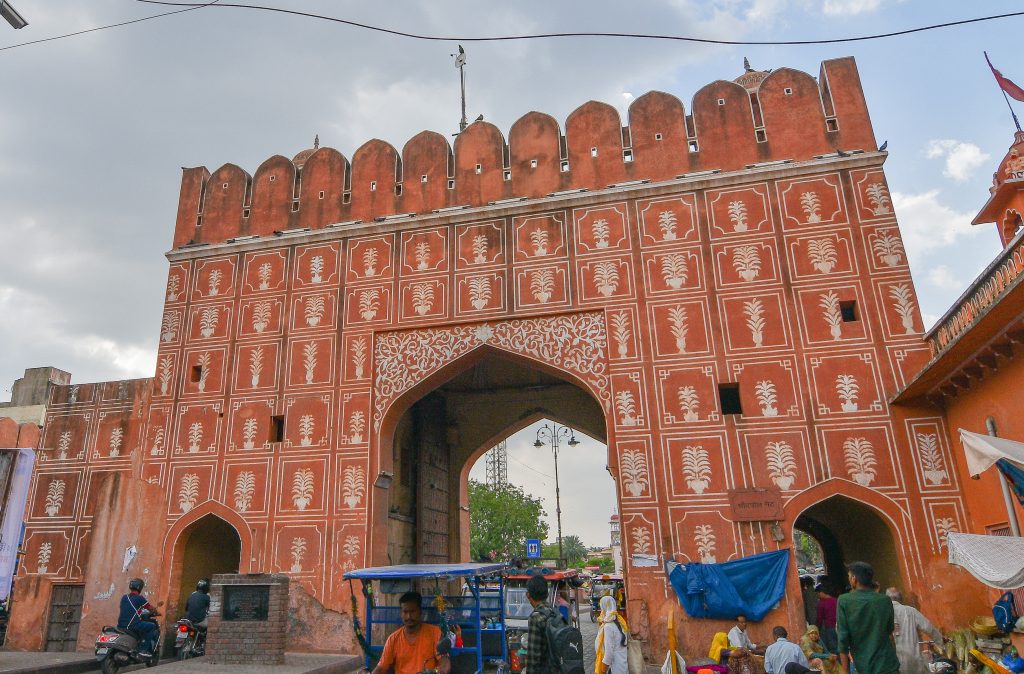
Walled City Bazars:
Since Jaipur was planned as a trade city, the main avenues of the city comprised of markets or bazars. While most people are busy shopping at these bazars it would be worthwhile to gaze at the architecture and recognize the efforts that went into planning these markets. There are parapets or chajjas that ensure shoppers don’t have to bear the blazing sun over their heads, and lattice work cuts the glaring sunlight. There are clear-cut signages of shops in Hindi.
The original markets in Jaipur are Kishanpol Bazaar, Gangauri Bazaar, Johari Bazaar, and Sireh Deodhi Bazaar. Johari Bazar is famous for the jewellery shopping. Sireh Deodhi Bazar near Hawa Mahal is known for its quilts and antique shopping. The Tripoliya Bazar gets its name from the Tripoliya Gate, owned and used by the royal family. Chandpol Bazar, as the name suggests, extends from the Chandpol Gate. It is famous for its traditional handicrafts, marble crafts, and jewellery.
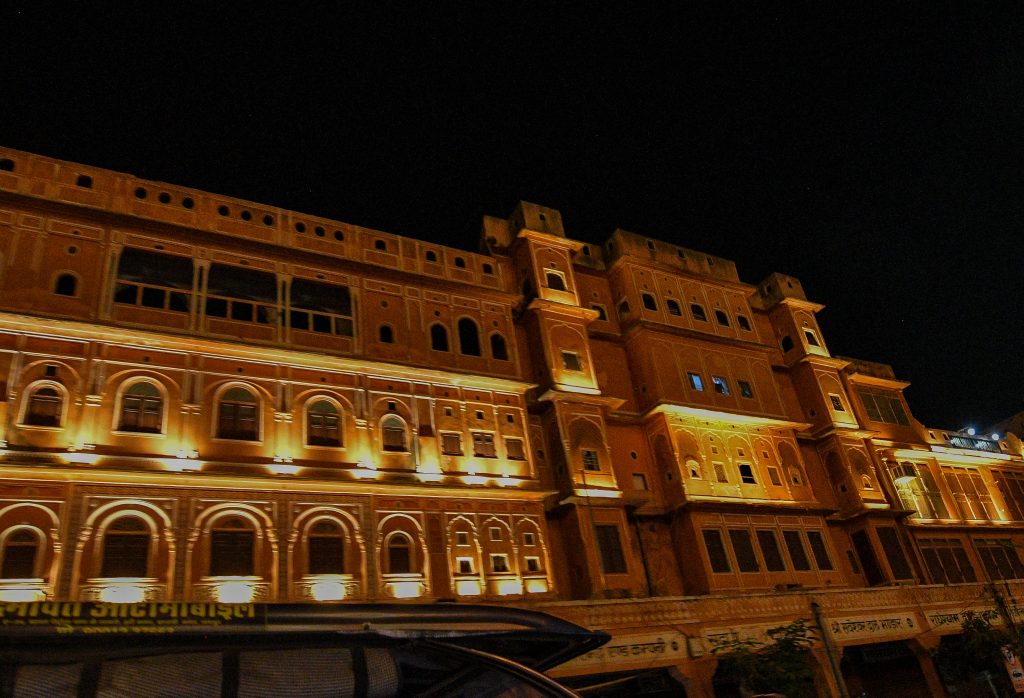
Chaupars and Chowkris:
Our guide explains that ‘chaupars’ mean ‘squares’ at the crossings of the wide roads. The chaupars are at intersection of the main north- south and east- west streets. They were designed to serve as public spaces for local communities. In earlier times, processions and festivals were celebrated here. They also housed water tanks which received water through an underground canal system. Jaipur has three chaupars: Badi Chaupar (Big Square), also called Manek Chowk, Choti Chaupar (Small Square) also called Amber Chowk and Ramganj Chaupar.
Since Jaipur is a planned city, all roads are in north-south and east-west direction. The primary roads divide the city into nine chowkris or quadrants. The Chowkri Sarhad is the palace block with royal buildings, temples and gardens.
Jaleb Chowk:
This chowk is at the entrance of the City Palace and near Jantar Mantar. An ornamental gate called Naqqarkhana Gate opens to the chowk. Musicians played the drums here announcing the arrival of the royals. ‘Jaleb’ in Persian means soldier and was used for parades. The guide jokes that some ill-informed people mispronounce it as Jalebi Chowk, referring to the Indian sweet. The chowk is mainly used for parking cars while visiting City Palace and Jantar Mantar.
Rajasthan or Maharaja School of Arts:
Located in Kishanpol Bazar, it was established in 1866 in a haveli belonging to the then Prime Minister of Jaipur State. It’s an amalgamation of Rajasthani and Victorian architectural styles. The building houses a ‘Museum of Legacies’ and showcases the arts and crafts of Jaipur.
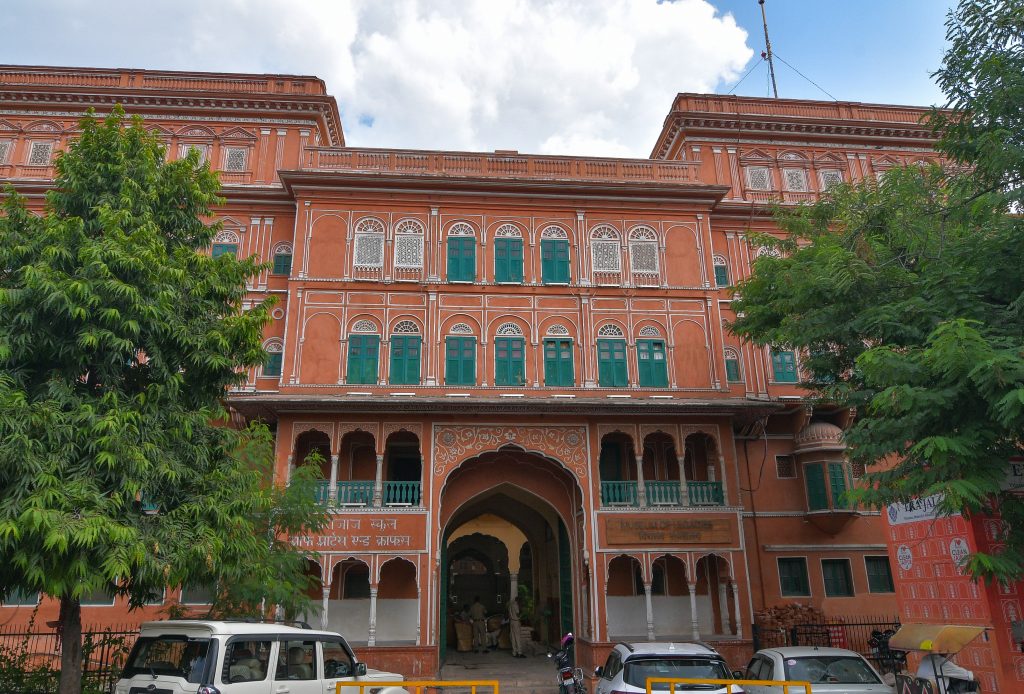
Isar Lat Sargasuli Tower:
It is the tallest structure in the walled city skyline. It was built to commemorate the victory of Sawai Ishwari Singh over Sawai Madho Singh. The 140-foot-high minaret is called Sargasuli, meaning a passage to heaven.
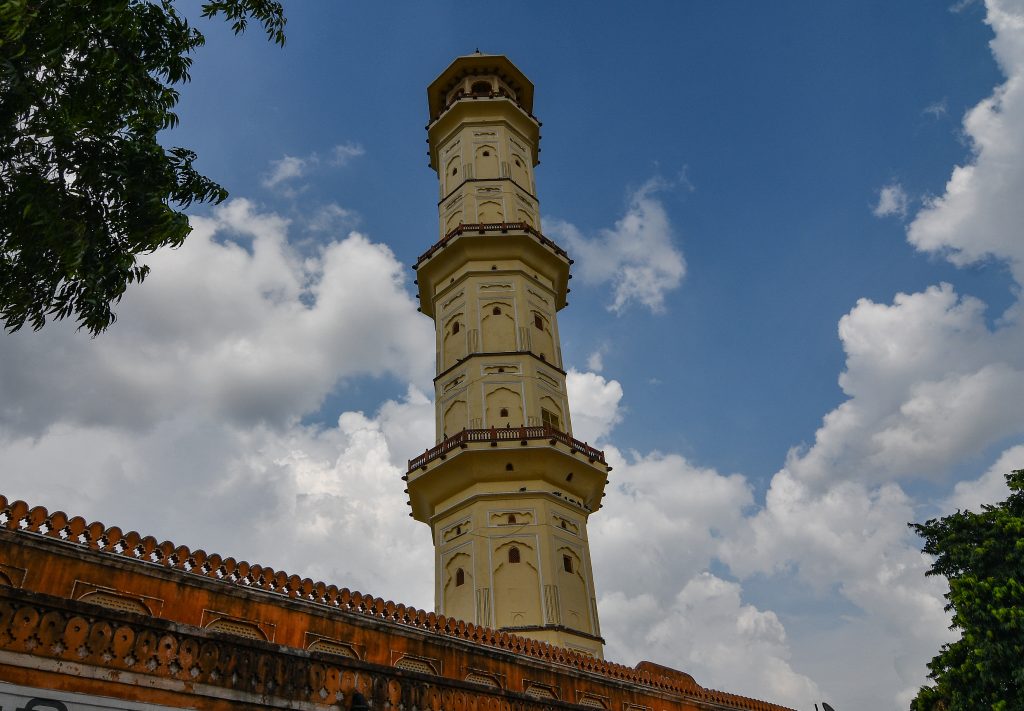
Temples and Religious Buildings
There are more than 600 temples in Jaipur. The Govind Devji Temple is very famous in Jaipur. We end up at one of the gates but find it closed. We see the Hanumanji Temple near Sanganeri Gate, Seeta Ramji Mandir at Choti Chaupar, Laxmi Narayan Temple at Badi Chaupar.
Havelis and Houses:
The havelis are mansions belonging to the nobles who served the kings. The city has many noteworthy havelis. We see the Natani Haveli which houses the Maharajas Girls School at Choti Chaupar. The intricate floral patterns on its façade, delicate lattice work on the windows and jharokas are a testimony of the efforts and craftsmanship that went into constructing this haveli.
Water Structures:
Various water collection methods were devised since water was scarce in and around Jaipur. A network of wells, step wells and water bodies were developed. We visit the Talkatora lake near the palace. From the boundary wall, we can see the lake and a dried-up garden. There are a couple of boats anchored near the periphery.
We have finally come to the end of our Jaipur UNESCO World Heritage Site walk. It is no surprise that Jaipur, the walled city, continues to thrive today because of the thoughts and efforts that went into planning and making it more than four centuries ago. With its meticulous architecture and planning, magnificent palaces, vibrant bazars, and exquisite craftsmanship, the city had made a lasting impression on us. Since no or few curated walks that explore Jaipur as a UNESCO World Heritage Site are available, we hope this article will help you explore the city better—and one more thing. Please explore the city at night when all the monuments are illuminated. The monuments and structures sparkle like jewels in the night sky!
| GETTING THERE
Nearest Airport: Jaipur has an airport with connectivity to major cities in India. Travel Help: Rajasthan Routes and Trails helped us plan this trip to Jaipur. Travel Tip: Please wear comfortable shoes and a hat as there will be considerable walking in the sun. Please carry water bottles to keep yourself hydrated especially in summer. It will take you 6-7 hours to explore all this. You can even spread it out over two days for a more comfortable experience. |

